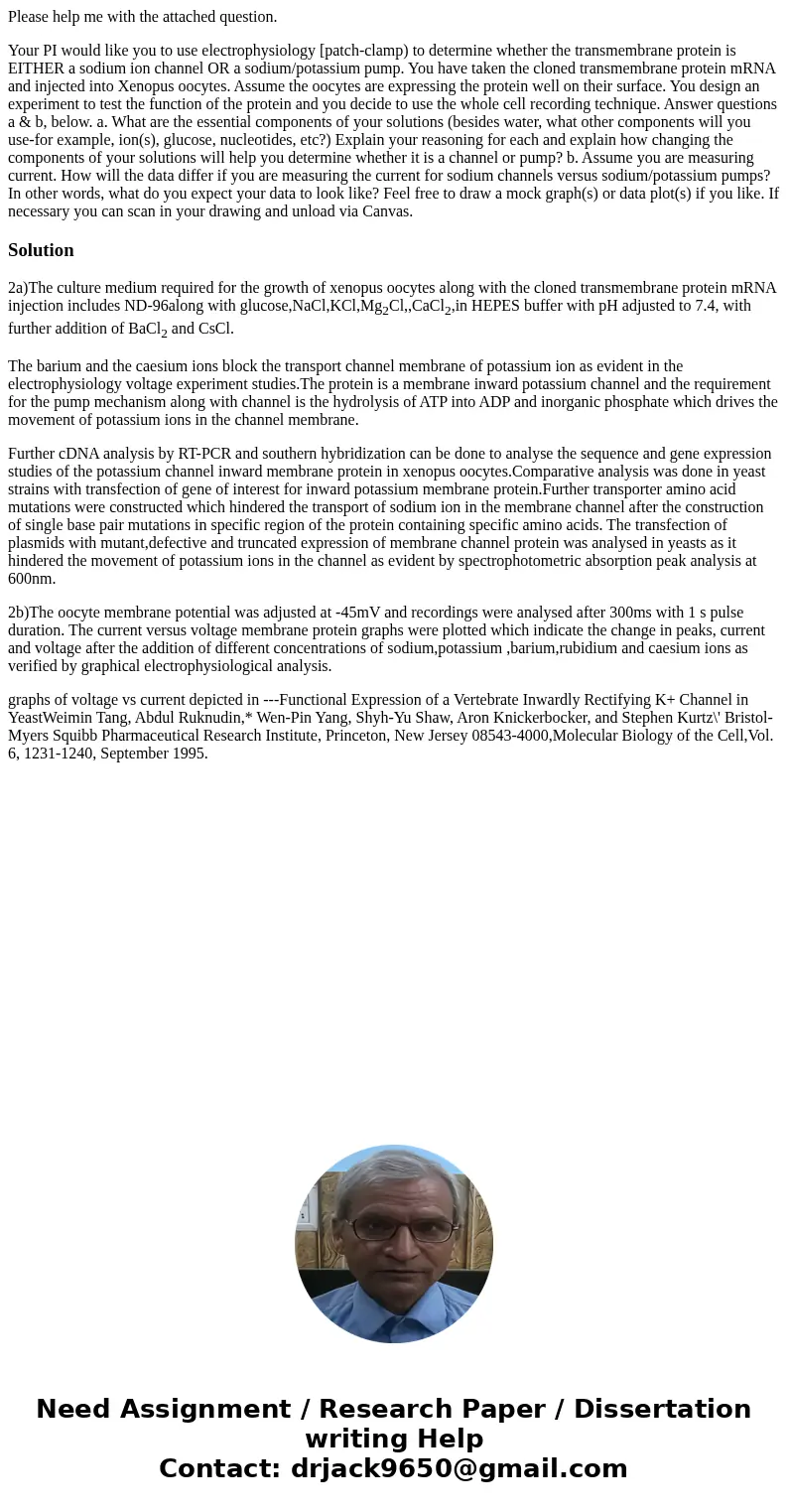Please help me with the attached question Your PI would like
Please help me with the attached question.
Your PI would like you to use electrophysiology [patch-clamp) to determine whether the transmembrane protein is EITHER a sodium ion channel OR a sodium/potassium pump. You have taken the cloned transmembrane protein mRNA and injected into Xenopus oocytes. Assume the oocytes are expressing the protein well on their surface. You design an experiment to test the function of the protein and you decide to use the whole cell recording technique. Answer questions a & b, below. a. What are the essential components of your solutions (besides water, what other components will you use-for example, ion(s), glucose, nucleotides, etc?) Explain your reasoning for each and explain how changing the components of your solutions will help you determine whether it is a channel or pump? b. Assume you are measuring current. How will the data differ if you are measuring the current for sodium channels versus sodium/potassium pumps? In other words, what do you expect your data to look like? Feel free to draw a mock graph(s) or data plot(s) if you like. If necessary you can scan in your drawing and unload via Canvas.Solution
2a)The culture medium required for the growth of xenopus oocytes along with the cloned transmembrane protein mRNA injection includes ND-96along with glucose,NaCl,KCl,Mg2Cl,,CaCl2,in HEPES buffer with pH adjusted to 7.4, with further addition of BaCl2 and CsCl.
The barium and the caesium ions block the transport channel membrane of potassium ion as evident in the electrophysiology voltage experiment studies.The protein is a membrane inward potassium channel and the requirement for the pump mechanism along with channel is the hydrolysis of ATP into ADP and inorganic phosphate which drives the movement of potassium ions in the channel membrane.
Further cDNA analysis by RT-PCR and southern hybridization can be done to analyse the sequence and gene expression studies of the potassium channel inward membrane protein in xenopus oocytes.Comparative analysis was done in yeast strains with transfection of gene of interest for inward potassium membrane protein.Further transporter amino acid mutations were constructed which hindered the transport of sodium ion in the membrane channel after the construction of single base pair mutations in specific region of the protein containing specific amino acids. The transfection of plasmids with mutant,defective and truncated expression of membrane channel protein was analysed in yeasts as it hindered the movement of potassium ions in the channel as evident by spectrophotometric absorption peak analysis at 600nm.
2b)The oocyte membrane potential was adjusted at -45mV and recordings were analysed after 300ms with 1 s pulse duration. The current versus voltage membrane protein graphs were plotted which indicate the change in peaks, current and voltage after the addition of different concentrations of sodium,potassium ,barium,rubidium and caesium ions as verified by graphical electrophysiological analysis.
graphs of voltage vs current depicted in ---Functional Expression of a Vertebrate Inwardly Rectifying K+ Channel in YeastWeimin Tang, Abdul Ruknudin,* Wen-Pin Yang, Shyh-Yu Shaw, Aron Knickerbocker, and Stephen Kurtz\' Bristol-Myers Squibb Pharmaceutical Research Institute, Princeton, New Jersey 08543-4000,Molecular Biology of the Cell,Vol. 6, 1231-1240, September 1995.

 Homework Sourse
Homework Sourse